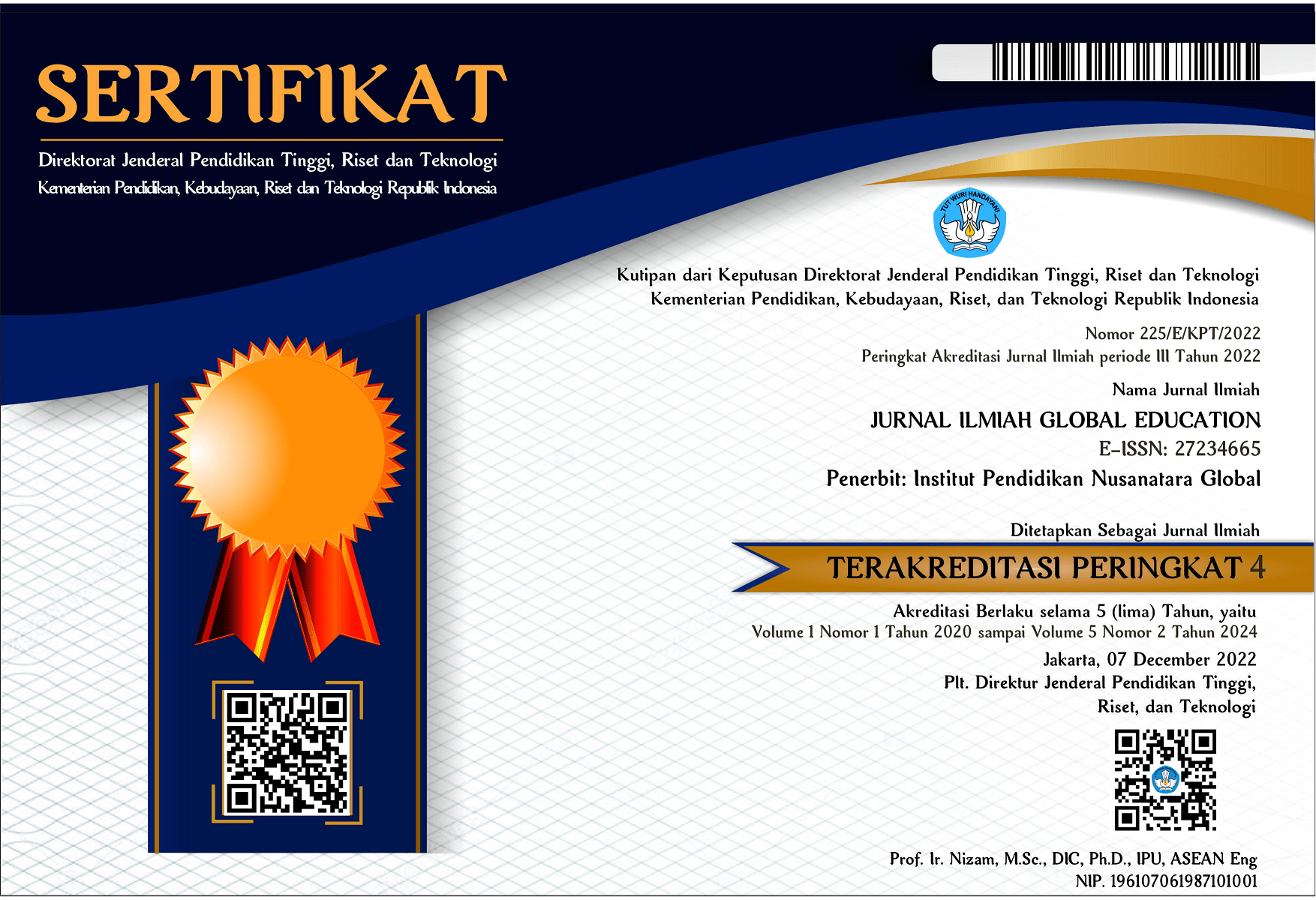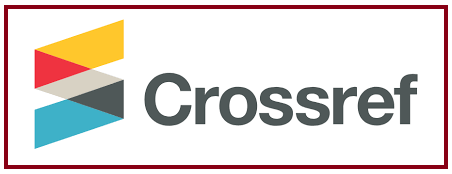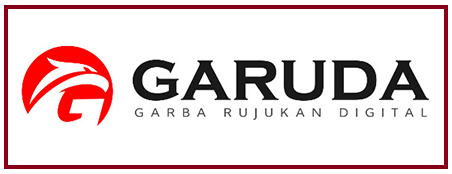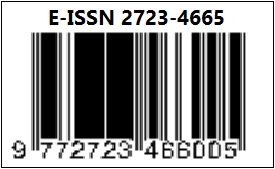Combining Foodscape and Touristscape: International Tourism Marketing for Singapore and Batam
DOI:
https://doi.org/10.55681/jige.v5i2.2600Keywords:
foodscape, touristscape, promotionAbstract
The cities of Batam and Singapore are centers for tourist lovers, but official government authorities and destination marketing organizations tend to underestimate the potential of these destinations to be revisited by international tourists. In particular, there is little empirical research on international tourism, culinary tourism, and international marketing. This article aims to explore the scope of promotion of Batam and Singapore as culinary destinations. For the purpose of this research, A descriptive qualitative methodology using content analysis was developed to ascertain the relationship between food and tourism in the two places observed. using content analysis was developed to ascertain the relationship between food and tourism in the two observed places. The research method was carried out by conducting interviews and field observations. Data sources were obtained from interviews with Pokdarwis in Batam and tourists in Singapore. The research results stated the integration of Foodscape and Touristscape presents a promising avenue for international tourism marketing in both Singapore and Batam. These destinations possess rich culinary landscapes and diverse attractions that appeal to a wide range of travelers. By leveraging the synergy between Foodscape, which encompasses the culinary offerings reflective of their multicultural societies, and Touristscape, which includes the physical environment and attractions, Singapore and Batam can create compelling marketing strategies to attract international tourists. The combination of authentic culinary experiences, vibrant cultural attractions, and modern amenities positions both destinations as premier tourist destinations in the region.
Downloads
References
Aik, J., Newall, A. T., Ng, L.-C., Kirk, M. D., & Heywood, A. E. (2018). Use of the letter-based grading information disclosure system and its influence on dining establishment choice in Singapore: A cross-sectional study. Food Control, 90, 105–112. https://doi.org/https://doi.org/10.1016/j.foodcont.2018.02.038
Amore, A. (2019). Tourism and Urban Regeneration: Processes Compressed in Time and Space, Routledge, Abingdon.
Anggraini, R., & Idris, E. N. (2023). The Influence of Destination Personality, Destination Image and Customer Experience on Intention to Recommend at Trendy Coffee Cafe in Batam City. Jurnal Pendidikan Dan Keluarga, 15(01), 24. https://doi.org/10.24036/jpk/vol15-iss01/888
Azam, M., Mahmudul Alam, M., & Haroon Hafeez, M. (2018). Effect of tourism on environmental pollution: Further evidence from Malaysia, Singapore and Thailand. Journal of Cleaner Production, 190, 330–338. https://doi.org/https://doi.org/10.1016/j.jclepro.2018.04.168
Azis, N., Amin, M., Chan, S., & Aprilia, C. (2020). How smart tourism technologies affect tourist destination loyalty. Journal of Hospitality and Tourism Technology, 11(4), 603–625. https://doi.org/10.1108/JHTT-01-2020-0005
Bertella, G. (2020). The vegan food experience: Searching for happiness in the Norwegian foodscape. Societies. https://www.mdpi.com/2075-4698/10/4/95
Björk, P., & Kauppinen-Räisänen, H. (2019). Destination foodscape: A stage for travelers’ food experience. Tourism Management. https://www.sciencedirect.com/science/article/pii/S0261517718302747
Bu, Y., Parkinson, J., & Thaichon, P. (2020). Digital content marketing as a catalyst for e-WOM in food tourism. Australasian Marketing Journal, 29(2), 142–154. https://doi.org/10.1016/j.ausmj.2020.01.001
Chatzinakos, G. (2016). Exploring Potentials for Culinary Tourism through a Food Festival: The Case of Thessaloniki Food Festival. Transnational Marketing Journal, 4(2), 110–125. https://doi.org/10.33182/tmj.v4i2.394
Creswell, J. W. (2016). Qualitative Inquiry dan Research Design. University Of Nebraska, Lincoln.
Dinnie, K. (2019). City Branding : Theory and Cases. Houndmills: Palgrave Macmillan.
Dwiputrianti, S., & Saragih, N. K. (2015). Better City, Better Local Competitiveness? City Branding and Marketing Toward Economic Development. Unima-IAPA International Seminar and Annual Conference (UNISAC) 2015, September.
Ferzacca, S., Naidoo, N., Wang, M. C., Reddy, G., & van Dam, R. M. (2013). “Sometimes they’ll tell me what they want”: Family and inter-generational food preferences in the food decisions of Singaporean women. Appetite, 69, 156–167. https://doi.org/https://doi.org/10.1016/j.appet.2013.05.021
Gómez, M., Fernández, A. C., Molina, A., & Aranda, E. (2018). City branding in European capitals: An analysis from the visitor perspective. Journal of Destination Marketing and Management, 7(March 2016), 190–201. https://doi.org/10.1016/j.jdmm.2016.11.001
Hallmann, K., Zehrer, A., & Müller, S. (2013). Perceived Destination Image: An Image Model for a Winter Sports Destination and Its Effect on Intention to Revisit. Journal of Travel Research, 54(1), 94–106. https://doi.org/10.1177/0047287513513161
Handani, N. D., Williady, A., & Kim, H. S. (2022). An Analysis of Customer Textual Reviews and Satisfaction at Luxury Hotels in Singapore’s Marina Bay Area (SG-Clean-Certified Hotels). Sustainability (Switzerland), 14(15). https://doi.org/10.3390/su14159382
Harrington, R. J., Ottenbacher, M. C., & Kendall, K. W. (2011). Fine-Dining Restaurant Selection: Direct and Moderating Effects of Customer Attributes. Journal of Foodservice Business Research, 14(3), 272–289. https://doi.org/10.1080/15378020.2011.594388
Heeley, J. (2015). Urban destination marketing in contemporary Europe – what does ‘good’ look like?”, International Journal of Tourism Cities, Vol. 1 No. 1, pp. 36-49.
Henderson, J. C. (2016a). Halal food, certification and halal tourism: Insights from Malaysia and Singapore. Tourism Management Perspectives, 19, 160–164. https://doi.org/https://doi.org/10.1016/j.tmp.2015.12.006
Henderson, J. C. (2016b). Local and traditional or global and modern? Food and tourism in Singapore. Journal of Gastronomy and Tourism, 2(1), 55–68. https://doi.org/10.3727/ 216929716X14546365943494.
Henderson, J. C. (2019). Street Food and Tourism: A Southeast Asian Perspective BT - Food Tourism in Asia (E. Park, S. Kim, & I. Yeoman (eds.); pp. 45–57). Springer Nature Singapore. https://doi.org/10.1007/978-981-13-3624-9_4
Henderson, J. C., Chee, L., Mun, C. N., & Lee, C. (2011). Shopping, tourism and retailing in Singapore. Managing Leisure, 16(1), 36–48. https://doi.org/10.1080/13606719.2011.532599
Horng, J.-S., & Tsai, C.-T. (Simon). (2012). Exploring Marketing Strategies for Culinary Tourism in Hong Kong and Singapore. Asia Pacific Journal of Tourism Research, 17(3), 277–300. https://doi.org/10.1080/10941665.2011.625432
Hubner, I. B., Irene, N., Sitorus, B., & Pramono, R. (2020). The Effect of Nation Branding “ Thoughtful Indonesia ” upon the Decision Process of International Tourists to Visit Indonesia in New Normal Era / amid the Covid-19 Pandemic. 07(10), 3362–3373.
Indra, F. (2021). Development of Culinary Tourism Using Community Based Tourism Perspective in Pangkal Pinang , Bangka Belitung. 2(5), 228–233.
Isa, S. M., Ariyanto, H. H., & Kiumarsi, S. (2020). The effect of place attachment on visitors’ revisit intentions: evidence from Batam. Tourism Geographies, 22(1), 51–82. https://doi.org/10.1080/14616688.2019.1618902
Johnston, J. (n.d.). Foodies: Democracy and Distinction in the Gourmet Foodscape By Josee Johnston and Shyon Baumann Routledge. 2009. 258 pages. $31.95 paper. Reviewer …. Search.Proquest.Com. https://search.proquest.com/openview/488a0c3260e6b6d707a09aa6b68c3846/1?pq-origsite=gscholar&cbl=40555
Juliana, Djakasaputra, A., Hubner, I. B., & Noval, T. (2018). Pengaruh Celebrity Endorser Dan Brand Image Terhadap Purchase Intention Produk Kosmetik Etude House Pada Pelita Harapan Karawaci. Skylandsea, 2(2), 251–256.
Juliana, J. (2019). Analisis Pengaruh Brand Image, Service Quality dan Price Terhadap Customer Satisfaction. E-Jurnal Manajemen Universitas Udayana, 8 No 9. https://doi.org/DOI: https://doi.org/10.24843/EJMUNUD.2019.v08.i09.p25
Juliana, J. A. F., Pramezwary, A., Muller Hasoloan Situmorang, J., Djakasaputra, A., & Pramono, R. (2022). Model for measuring customer satisfaction and delight in Restaurant Industry. Jurnal Manajemen Industri Dan Logistik (JMIL), xx No. xx Month. https://doi.org/10.30988/jmil.vxix.xxxx
Juliana, J., Sihombing, S. O., & Antonio, F. (2023). An Investigation Between Nostalgic Value Resonance and Destination Brand Engagement in Rural Tourism. International Journal of Design and Nature and Ecodynamics, 18(1), 125–132. https://doi.org/10.18280/ijdne.180114
Juliana, Pramezwary, A., Lemy, D. M., Teguh, F., Djakasaputra, A., & Sianipar, R. (2022). Antecedents Experiential Commitment and Consequences in Willingness to Post Photo and Behavioral Intention Toward the Destination. International Journal of Design and Nature and Ecodynamics, 17(4), 547–556. https://doi.org/10.18280/ijdne.170408
Kakhaber Djakeli, T. T. (2012). Brand Awareness Matrix in Political Marketing Area. Journal of Business, 1(1), 25–28.
Katircioğlu, S. T. (2014). Testing the tourism-induced EKC hypothesis: The case of Singapore. Economic Modelling, 41, 383–391. https://doi.org/https://doi.org/10.1016/j.econmod.2014.05.028
Katz-Gerro, T. (2011). Foodies: Democracy and Distinction in the Gourmet Foodscape. JSTOR. https://doi.org/10.1086/658074
Kavaratzis, M., & Hatch, M. J. (2013). The dynamics of place brands: An identity-based approach to place branding theory. Marketing Theory, 13(1), 69–86. https://doi.org/10.1177/1470593112467268
Ketonen-Oksi, S., Jussila, J. J., & Kärkkäinen, H. (2016). Social “media-based” value creation and business models. Industrial Management and Data Systems, 116(8), 1820–1838. https://doi.org/10.1108/IMDS-05-2015-0199
Kim. (2012). Construction and validation of a scale to measure tourist motivation to consume local food”, Tourism Management, Vol. 33 No. 6, pp. 1458-1467.
Kipnis, E., Broderick, A. J., Demangeot, C., Adkins, N. R., Ferguson, N. S., Henderson, G. R., Johnson, G., Mandiberg, J. M., Mueller, R. D., Pullig, C., Roy, A., & Zúñiga, M. A. (2013). Branding beyond prejudice: Navigating multicultural marketplaces for consumer well-being. Journal of Business Research, 66(8), 1186–1194. https://doi.org/10.1016/j.jbusres.2012.08.011
Kurniawan, P. H., Lismayasari, L., & Novrianti, D. P. (2020). HALAL PERSPECTIVE: A CONCEPT PROMOTION CULINARY THROUGH DIGITAL MARKETING TO IMPROVE SMEs PERFORMANCE IN BATAM. Jurnal Aplikasi Manajemen, 18(1), 57–63. https://doi.org/10.21776/ub.jam.2020.018.01.05
Lau, C. and L. Y. (2019). Analyzing the effects of an urban food festival: a place theory approach”, Annals of Tourism Research, Vol. 74, pp. 43-55.
Lee, D., Bhati, A., & Murphy, L. (2013). Singapore’s Ability to Maintain Destination Competitiveness Through Integrated Resorts (IRs) BT - Proceedings of the International Conference on Managing the Asian Century (P. Mandal (ed.); pp. 547–558). Springer Singapore.
Li, F. (2020). Integrated Development of Marine Culture and Tourism Industry. Journal of Coastal Research, 112(sp1), 140–143. https://doi.org/10.2112/JCR-SI112-040.1
Lim, C., & Zhu, L. (2018). Examining the link between meetings, incentive, exhibitions, and conventions (MICE) and tourism demand using generalized methods of moments (GMM): the case of Singapore. Journal of Travel & Tourism Marketing, 35(7), 846–855. https://doi.org/10.1080/10548408.2018.1435334
Lim, C., Zhu, L., & Koo, T. T. R. (2019). Urban redevelopment and tourism growth: Relationship between tourism infrastructure and international visitor flows. International Journal of Tourism Research, 21(2), 187–196. https://doi.org/https://doi.org/10.1002/jtr.2253
Lin, L., & Mao, P. C. (2015). Food for memories and culture - A content analysis study of food specialties and souvenirs. Journal of Hospitality and Tourism Management, 22, 19–29. https://doi.org/10.1016/j.jhtm.2014.12.001
Lin, Y.-C., Pearson, T. E., & Cai, L. A. (2011). Food as a form of Destination Identity: A Tourism Destination Brand Perspective. Tourism and Hospitality Research, 11(1), 30–48. https://doi.org/10.1057/thr.2010.22
Lindberg, M., Wikberg Nilsson, Å., Segerstedt, E., Hidman, E., Nilsson, K. L., Karlberg, H., & Balogh, J. (2020). Co-creative place innovation in an arctic town. Journal of Place Management and Development, 13(4), 447–463. https://doi.org/10.1108/JPMD-02-2019-0009
Löhndorf, B., & Diamantopoulos, A. (2014). Internal Branding: Social Identity and Social Exchange Perspectives on Turning Employees into Brand Champions. Journal of Service Research, 17(3), 310–325. https://doi.org/10.1177/1094670514522098
Lucarelli, A. and O. B. P. (2011). City branding: a state-of-the-art review of the research domain”, Journal of Place Management and Development, Vol. 4 No. 1, pp. 9-27.
Luck, E., Muratovski, G., & Hedley, L. (2014). Co-branding strategies for luxury fashion brands: Missoni for target. Global Fashion Brands: Style, Luxury & History, 1(1), 41–56. https://doi.org/10.1386/eme.12.3-4.267.
Marceau, J. (2008). Introduction: innovation in the city and innovative cities”, innovation: management”, Policy & Practice, Vol. 10, pp. 136-145.
Marshall, K. N. (2023). Beyond the Digital Foodscape: Scottish-based Foodies’ use of social media influencers to explore and choose food. napier-repository.worktribe.com. https://napier-repository.worktribe.com/output/3175338
McKercher. (2008). Food tourism as a viable market segment: it’s all how you cook the numbers!”, Journal of Travel & Tourism Marketing, Vol. 25 No. 2, pp. 137-148,”.
Moon, H., & Han, H. (2019). Tourist experience quality and loyalty to an island destination: the moderating impact of destination image. Journal of Travel & Tourism Marketing, 36(1), 43–59. https://doi.org/10.1080/10548408.2018.1494083
Movahed, A., Ghasemi, M., & Gholamalifard, N. (2020). An Analysis of the Culinary Tourism Experience between Gender Groups in Iran. Quaestiones Geographicae, 39(1), 99–108. https://doi.org/10.2478/quageo-2020-0008
Naruetharadhol, P. and G. N. (2020). A bibliometric analysis of food tourism studies in southeast Asia”, Cogent Business & Management, Vol. 7 No. 1, doi: 10.1080/23311975.2020.1733829.
Naumov, N., & Dutta, P. (2020). Food Culture: Gastronomic Experiences in Singapore. Journal of Gastronomy Hospitality and Travel (JOGHAT), 3(1), 20–29. https://doi.org/10.33083/joghat.2020.27
Neuman, W. . L. (2011). Social research methods: Qualitative and quantitative approaches.
Neuman, W. L. (2014). Social Research Methods : Qualitative and Quantitative Approaches, Seventh Edition. Pearson Education Limited Edinburgh Gate.
Nicoletti, S., Medina-Viruel, M. J., Di-Clemente, E., & Fruet-Cardozo, J. V. (2019). Motivations of the culinary tourist in the city of Trapani, Italy. Sustainability (Switzerland), 11(9). https://doi.org/10.3390/su11092686
Okumus. (2018). Marketing Istanbul as a culinary destination”, Journal of Destination Marketing & Management, Vol. 9, pp. 340-346.
Pearce, D. G. (2015). Urban management, destination management and urban destination management: a comparative review with issues and examples from New Zealand”, International Journal of Tourism Cities, Vol. 1 No. 1, pp. 1-17.
Pike, S., Kotsi, F., & Tossan, V. (2018). Stopover destination image: A comparison of salient attributes elicited from French and Australian travellers. Journal of Destination Marketing & Management, 9, 160–165. https://doi.org/https://doi.org/10.1016/j.jdmm.2018.01.002
Polat, A. S., & Cetinsoz, B. C. (2021). The Mediating Role of Brand Love in the Relationship Between Consumer-Based Brand Equity and Brand Loyalty: a Research on Starbucks. Journal of Tourism and Services, 12(22), 150–167. https://doi.org/10.29036/jots.v12i22.252
Pu, B. . T. M. and P. I. (2019). Hot chili peppers, tears and sweat: how experiencing Sichuan cuisine will influence intention to visit city of origin”, Sustainability, Vol. 11 No. 13, doi: 10.3390/ su11133561.
Reddy, G., & van Dam, R. M. (2020). Food, culture, and identity in multicultural societies: Insights from Singapore. Appetite, 149, 104633. https://doi.org/https://doi.org/10.1016/j.appet.2020.104633
Ribeiro, H., Fonseca Amaro, S., Seabra, C., & Luís Abrantes, J. (2014). Travel content creation: The influence of travelers’ innovativeness, involvement and use of social media. Journal of Hospitality and Tourism Technology, 5(3), 245–260. https://doi.org/10.1108/JHTT-06-2014-0020
Richards, G. (2011). Creativity and tourism. The state of the art. Annals of Tourism Research, 38(4), 1225–1253. https://doi.org/10.1016/j.annals.2011.07.008
Richards, G. (2012). Food and the tourism experience: Major findings and policy orientations”, in Doods, R. (Eds), Food and the Tourism Experience, OECD, Paris, pp. 13-46,”.
Richards, G. (2021). “Evolving research perspectives on food and gastronomic experiences in tourism", International Journal of Contemporary Hospitality Management, Vol. 33 No. 3, pp. 1037-1058. https://doi.org/10.1108/IJCHM-10-2020-1217,”.
Rousta, A., & Jamshidi, D. (2019). Food tourism value: Investigating the factors that influence tourists to revisit. Journal of Vacation Marketing, 26(1), 73–95. https://doi.org/10.1177/1356766719858649
Roy. (2017). Trust in local food networks: the role of trust among tourism stakeholders and their impacts in purchasing decisions”, Journal of Destination Marketing & Management, Vol. 6 No. 4, pp. 309-317.
Ruiz-Real, J. L., Uribe-Toril, J., & Gázquez-Abad, J. C. (2020). Destination branding: Opportunities and new challenges. Journal of Destination Marketing & Management, 17, 100453. https://doi.org/https://doi.org/10.1016/j.jdmm.2020.100453
Sahin, S. and B. S. (2014). City branding: investigating a Brand advocacy model for distinct segments”, Journal of Hospitality Marketing & Management, Vol. 23 No. 3, pp. 239-265.
Sari, D. A. A., & Muslimah, S. (2020). Blue economy policy for sustainable fisheries in Indonesia. IOP Conference Series: Earth and Environmental Science, 423(1). https://doi.org/10.1088/1755-1315/423/1/012051
Seo, S., Yun, N., & Kim, O. Y. (2017). Destination food image and intention to eat destination foods: A view from Korea. Current Issues in Tourism, 20(2), 135–156. https://doi.org/10.1080/ 13683500.2014.934210.
Shivam, R., & Singh, S. (2015). Conceptual Review on Gastronomy Tourism. International Journal of Scientific and Research Publications, 5(11), 643–647. https://doi.org/10.29322/ijsrp
Sung, Y.-K., Chang, K.-C., & Sung, Y.-F. (2016). Market Segmentation of International Tourists Based on Motivation to Travel: A Case Study of Taiwan. Asia Pacific Journal of Tourism Research, 21(8), 862–882. https://doi.org/10.1080/10941665.2015.1080175
Tan, S.-H., & Tan, S.-K. (2014). Are shocks to Singapore’s tourist arrivals permanent or transitory? An application of stationarity test with structural breaks. Current Issues in Tourism, 17(6), 480–486. https://doi.org/10.1080/13683500.2013.822854
Tarulevicz, N., & Ooi, C. S. (2021). Food safety and tourism in Singapore: between microbial Russian roulette and Michelin stars . Tourism Geographies, 23(4), 810–832. https://doi.org/10.1080/14616688.2019.1654540
Thees, H., Zacher, D., & Eckert, C. (2020). Work, life and leisure in an urban ecosystem - co-creating Munich as an Entrepreneurial Destination. Journal of Hospitality and Tourism Management, 44(July), 171–183. https://doi.org/10.1016/j.jhtm.2020.06.010
Thomas-Francois, K., von Massow, M., & Joppe, M. (2017). Service-oriented, sustainable, local food value chain – A case study. Annals of Tourism Research, 65, 83–96. https://doi.org/10.1016/j.annals.2017.05.008
Trishananto, Y., Arianti, D. I. N., & Maulani, E. D. (2021). Halal Culinary Tourism Promotion Strategy in Improving Performance Small and Medium Enterprises Through Digital Marketing in Batam City. Annual International Conference on Islamic Economics and Business (AICIEB), 1, 433–438. https://doi.org/10.18326/aicieb.v1i0.27
Tsai, C. T. S., & Wang, Y. C. (2017). Experiential value in branding food tourism. Journal of Destination Marketing and Management, 6(1), 56–65. https://doi.org/10.1016/j.jdmm.2016.02.003
Vanolo, A. (2015). The image of the creative city, eight years later: Turin, urban branding and the economic crisis taboo”, Cities, Vol. 46, pp. 1-7.
Vanolo, A. (2017). City Branding: The Ghostly Politics of Representation in Globalising Cities, Routledge, Abingdon.
Verneau, F. . C. F. . C. A. and L. P. (2014). Consumer fears and familiarity of processed food. The value of information provided by the FTNS”, Appetite, Vol. 73, pp. 140-146.
Xiong, D. X., & Brownlee, I. A. (2018). Memories of traditional food culture in the kampong setting in Singapore. Journal of Ethnic Foods, 5(2), 133–139. https://doi.org/https://doi.org/10.1016/j.jef.2018.02.007
Yan, H. (2019). Reflection on the Current Situation and Development Trend of Rural Landscape Design in Garden Planning. 城市建设理论研究—园林景观, 4(1), 21–22. https://doi.org/10.26789/yljg.2019.01.010
Yang, J. J., Iyer, R., & Lee, Y. K. (2022). Why Do Local Foodscapes Matter in Building Tourist Trust and Loyalty? Sustainability (Switzerland), 14(4). https://doi.org/10.3390/su14042029
You, Z. (2023). SWOT Analysis of the Tourism Industry in Singapore. Advances in Economics, Management and Political Sciences, 34(1), 160–166. https://doi.org/10.54254/2754-1169/34/20231696
Zhang, L. and Z. S. X. (2009). City branding and the Olympic effect: a case study of Beijing”, Cities, Vol. 26 No. 5, pp. 245-254.
Downloads
Published
How to Cite
Issue
Section
License
Copyright (c) 2024 Juliana, Ira Brunchilda Hubner, Febryola Indra, Rosianna Sianipar, Nova Bernedetta Sitorus, Arifin Djakasaputra

This work is licensed under a Creative Commons Attribution-ShareAlike 4.0 International License.













